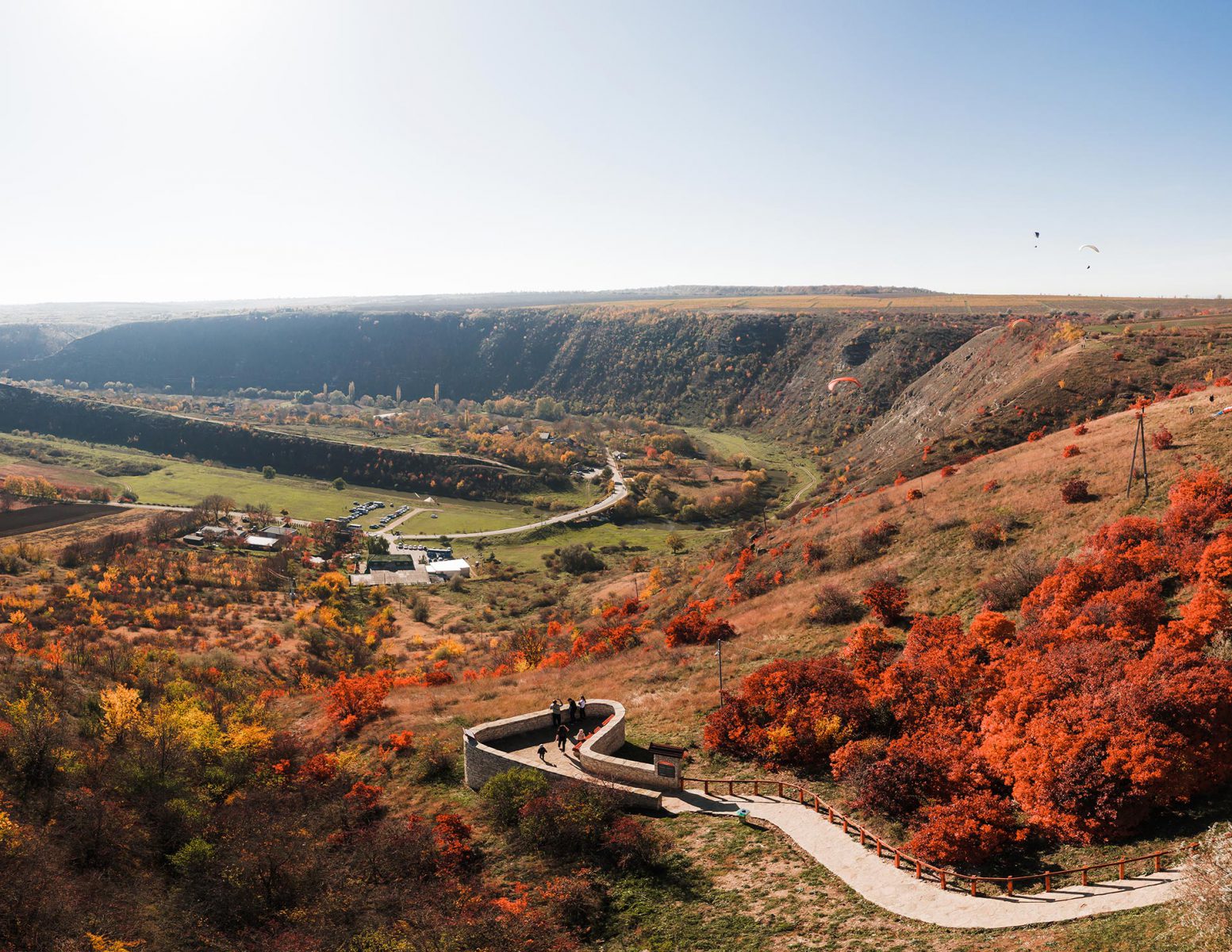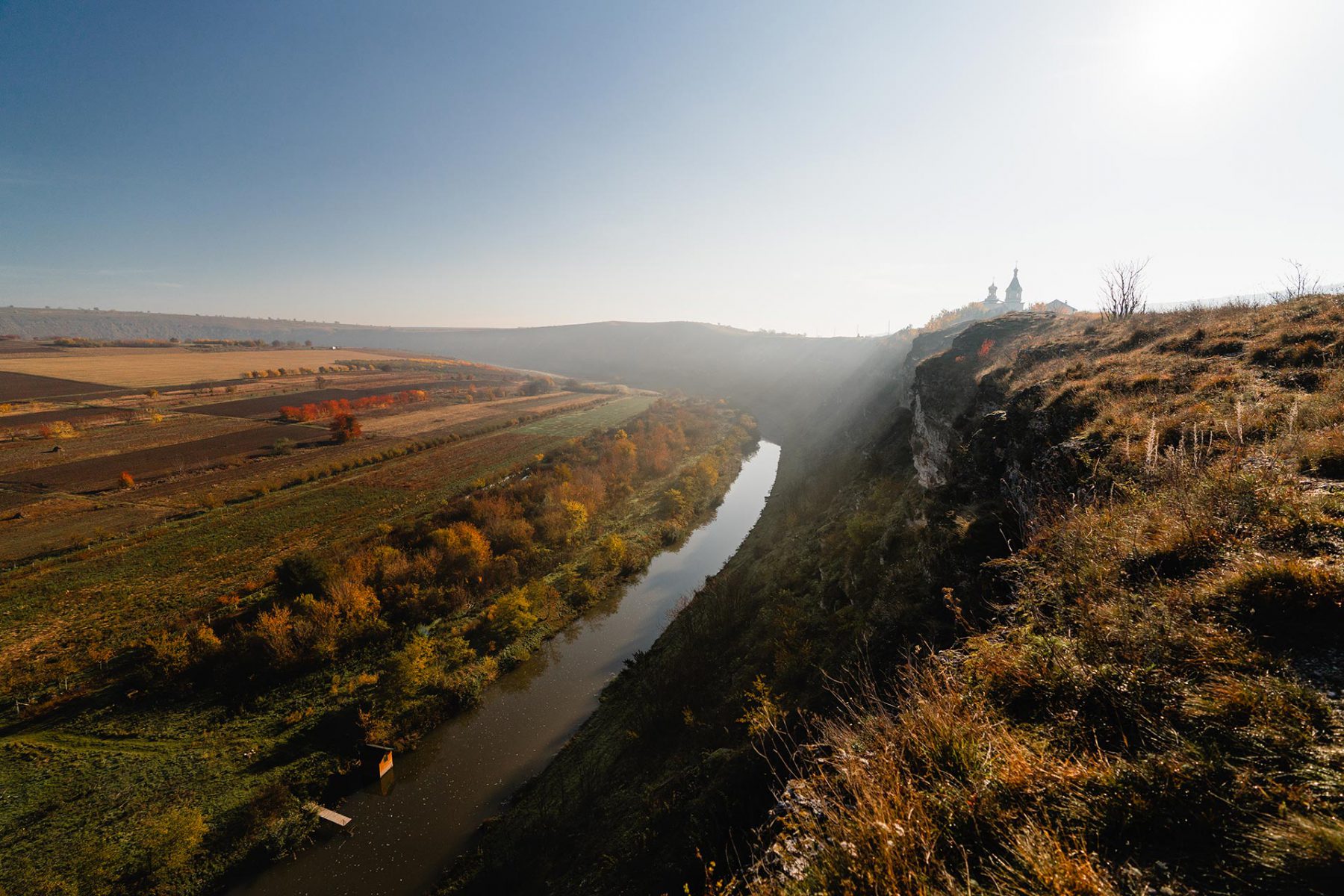Old Orhei Reserve
The Orheiul Vechi Cultural-Natural Reserve (known as “Old Orhei”) developed as a result of a harmonious collaboration between man and nature from prehistoric times to the present day, with archeological findings as early as the Late Paleolithic era (ca, 30-20,000 BC). Due to its strategic position close to the Dniester River, a major trading route connecting the Carpathians and the Black Sea Basin, and its geology forming a natural fortification, it has been inhabited almost continuously for thousands of years across the different civilizations and cultures who have called this place home. This has made the cultural heritage and landscape of Old Orhei a marker of national and universal culture.
In order to protect and enhance the cultural heritage of the area, the Orheiul Vechi area was declared a Reserve on March 15, 1968 by Decision no. 77 of the Moldovan SSR Government. This included the creation of the Old Orhei museum complex.
To ensure the protection, conservation and preservation of the Old Orhei historical, cultural and natural heritage for present and future generations, the Orheiul Vechi Cultural-Natural Reserve was established by Law no. 251/2008 and Government Decision no. 228/2009. It has the status of a legal entity and is subordinated to the authority of the central public administration responsible for the protection of cultural-historical heritage.




The Orheiul Vechi Cultural-Natural Reserve is a public law institution, subordinated to the Ministry of Education, Culture and Research.
Old Orhei includes the historical and cultural heritage assets (archaeological sites, rock complexes, vernacular architecture complexes, ethnographic objectives), traditional settlements (Trebujeni, Butuceni, Morovaia villages), natural heritage assets (geological and landscape ensembles, flora and fauna), land and water areas where the regulated exploitation of natural resources, agricultural, industrial and tourist activities are carried out.
The Reserve is a component part of the Orhei National Park, being an autonomous unit with its own administration.
Orhei National Park is located in the central part of the Republic of Moldova on the historical-geographical area of Codrii Orheiului, 46 km north of the capital city of Chisinau. The total area of the Park is 33792.09 ha, including: 19509.51 ha of state-owned land (18551.4 ha of state forest fund), 4404.87 ha of land owned by local public authorities and 9877.71 ha of land owned privately.
4978.99 ha
total area of the reserve
43517.29 m
perimeter of the reserve
6085.57 ha
area of protection zone
48644.86 m
perimeter of protection zone
The Reserve is located on the eastern edge of Orhei National Park.
It has an area of 4978.99 ha and a protection zone of 6085.57 ha. The perimeter of the Reserve is 43517.29 m and the perimeter of the protection zone is 48647.86 m.
The Reserve includes the territory of Trebujeni commune (Trebujeni, Butuceni and Morovaia villages) – 3924,60 ha and partially adjacent territories of the neighbouring communes/villages: Ivancea (Furceni and Brănești villages) – 381,57 ha, Susleni – 8,06 ha, Mașcăuți – 647,17 ha and Molovata – 17,59 ha.
The protected area of the Reserve includes territories of the communes/villages of Trebujeni – 68,35 ha, Susleni – 633,76 ha, Piatra – 338,60 ha, Ivancea (Furceni and Branesti villages) – 1255,18 ha, Masacauti – 2597,97 ha, Holercani – 479,42 ha, Marcauti – 232,16 ha, Molovata – 480,13 ha.
In the central part of the Reserve is delimited the Orheiul Vechi Archaeological Landscape, nominated in 2015 for inscription in the UNESCO World Heritage List. The archaeological landscape occupies an area of 539.12 ha with a perimeter of 13232.04 m and has a protection zone with an area of 10525.433 ha, which corresponds to the space of the Reserve.
